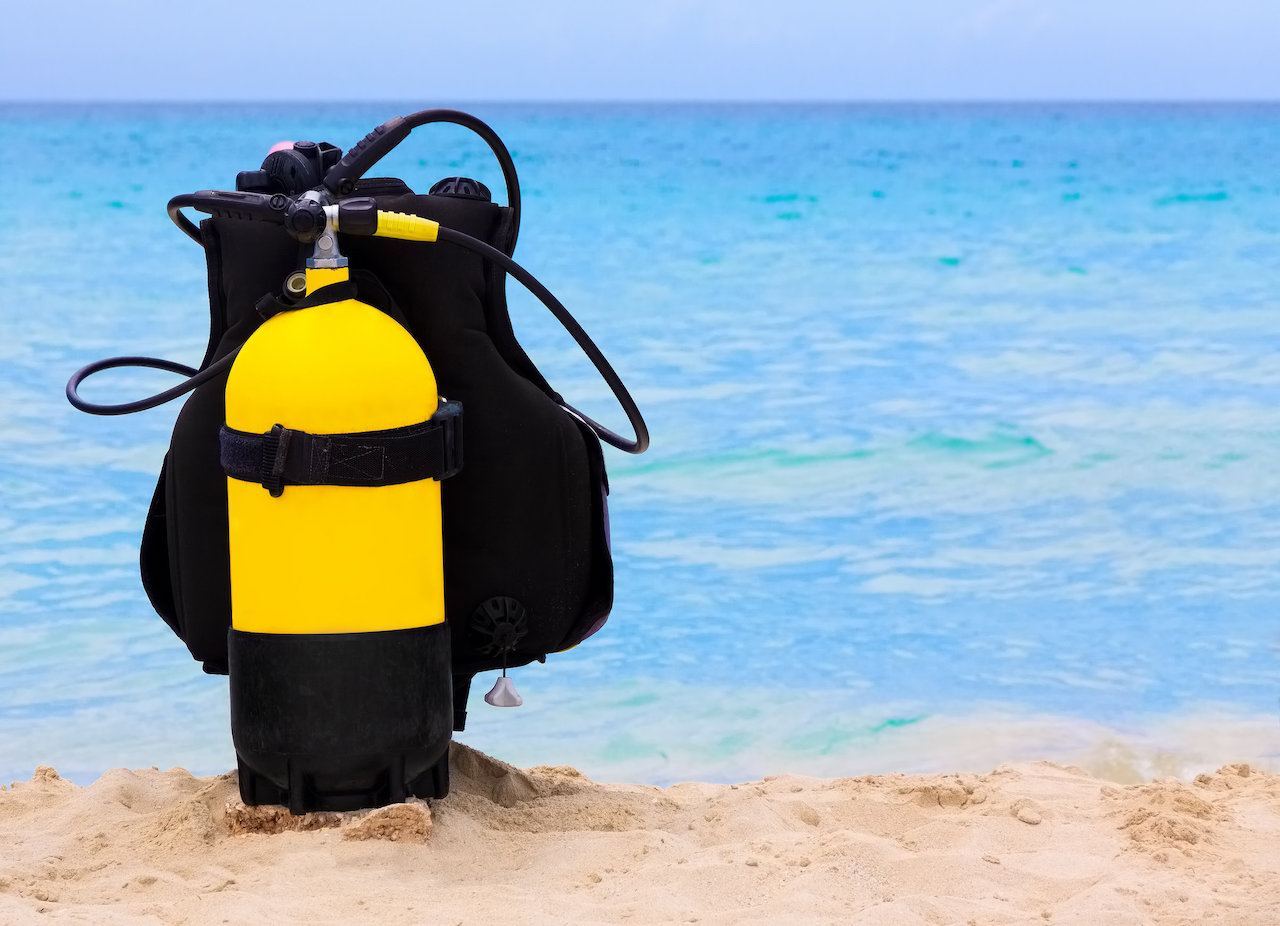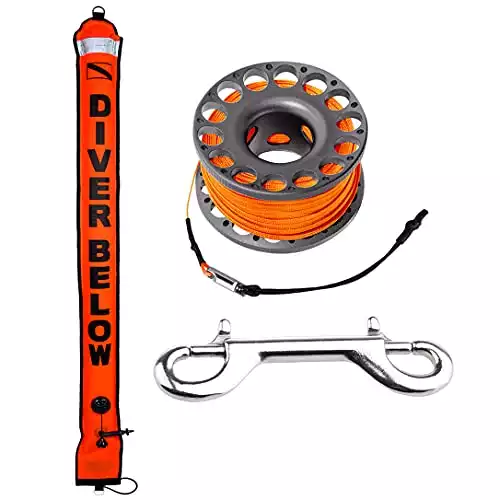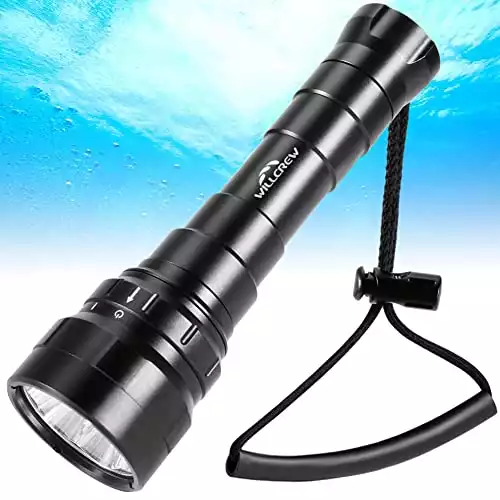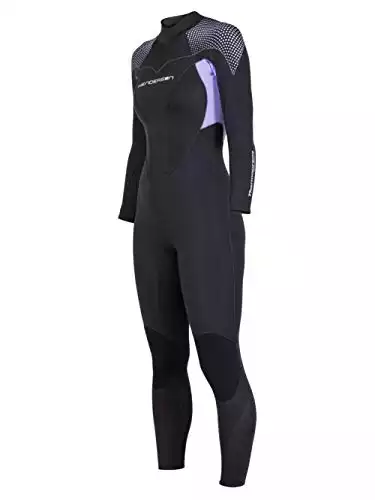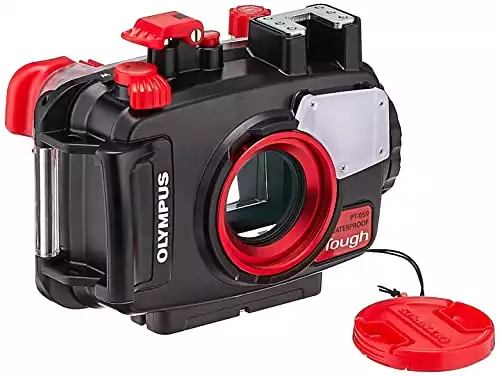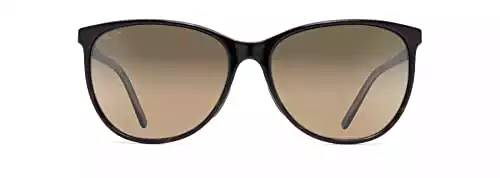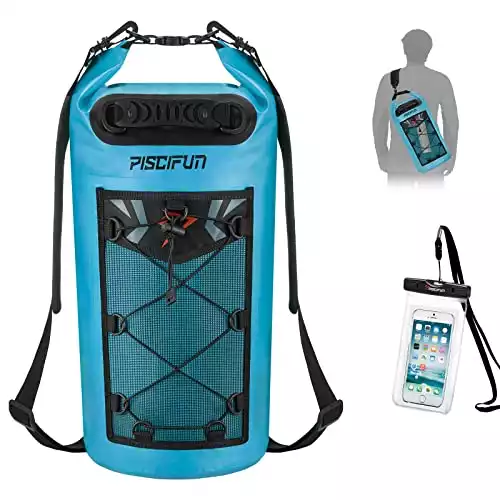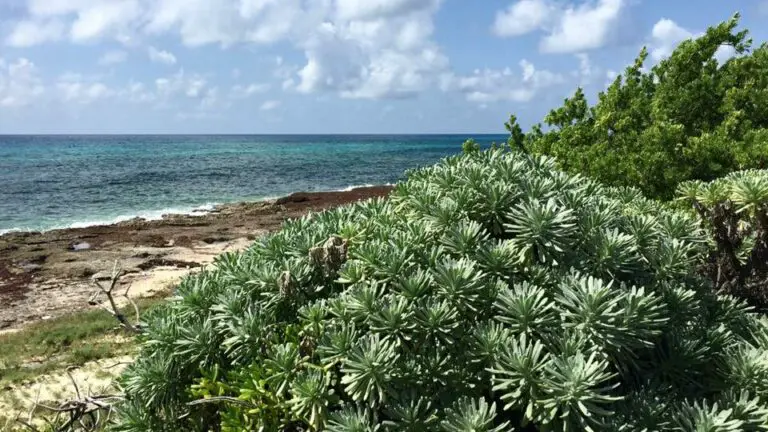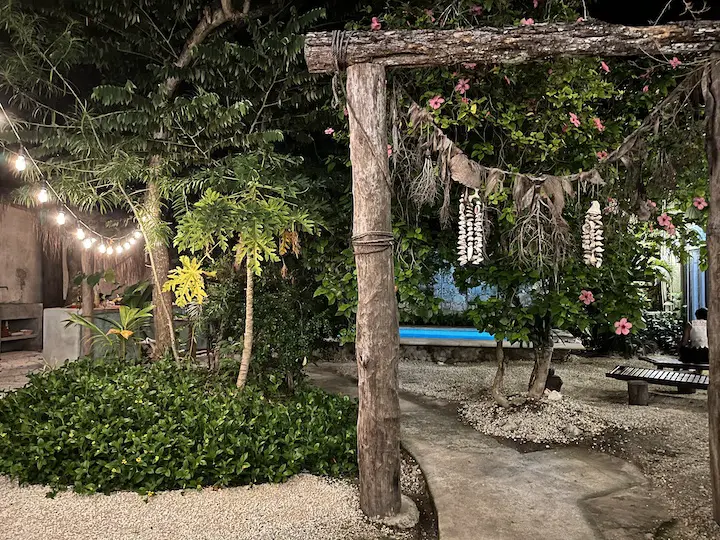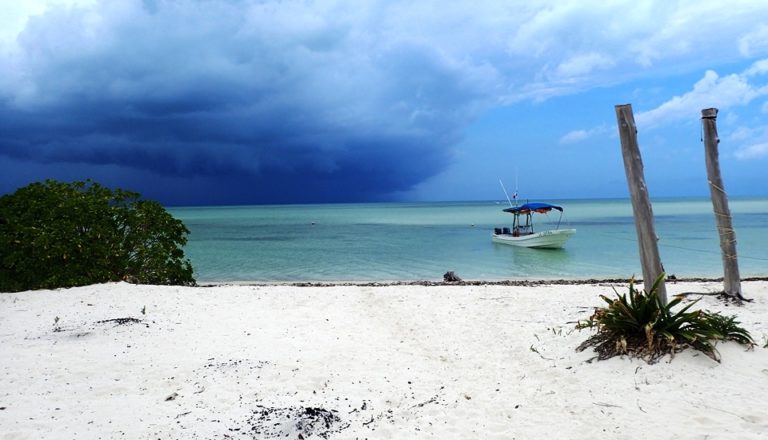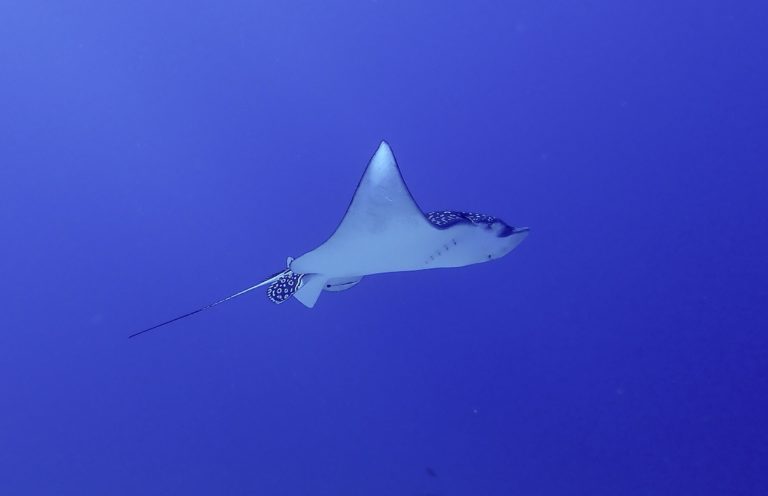Shore Diving in Cozumel – Top FAQs Answered
After more and more time living and diving here, I’m realizing how awesome Cozumel shore dives can be. I used to be kind of a boat-diving snob, but no more!
Most SCUBA diving in Cozumel falls into the categories of both “boat diving” and “drift diving.” And there’s no doubt: boat diving is fun and awesome.
But of course many times there are great reasons to opt for a Cozumel shore dive!
Cozumel is known primarily for boat diving, but has plenty of opportunity to get in some good SCUBA dives directly from shore. Good Cozumel shore dives sites offer the same clear conditions, and a great chance to see all types of coral and marine life. Interested divers can find out where and how to safely enter and exit the water, and what additional safety accessories they may need to use on shore dives.
So, if you want to do some shore diving in Cozumel, are you out of luck? Is it ALL boat diving?
Heck no.
Stick around for a quick primer on shore diving in Cozumel, namely info on where you can do it, and what to be careful of.
But not in that order…
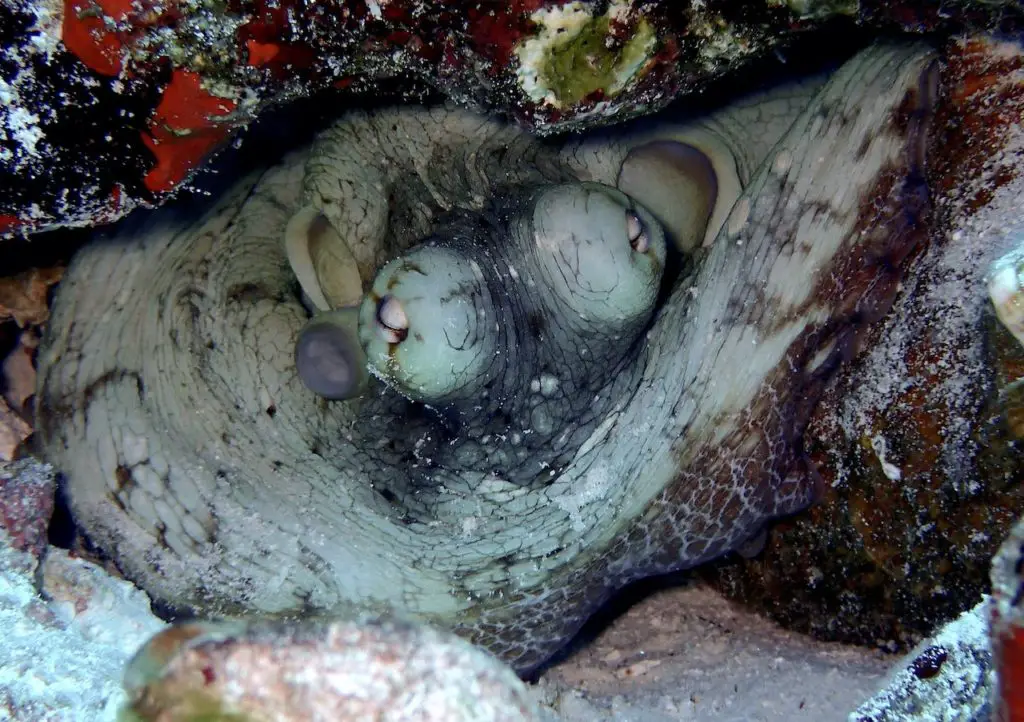
Why Cozumel Shore Diving is Better than Boat Diving (…Sometimes!)
First of all, why would you opt for shore diving when there are so many perfectly good dive boats and dive masters operating around the island of Cozumel?!
Well, there are several good reasons:
1. Check Out Dives and Refresher Dives
If you need to get in a quick dive at the beginning of your trip to check your weights, or maybe test out a new piece of gear in a more limited way, a shore dive is smart and responsible.
Or perhaps you’re a new diver. Or it’s been a while and you know you really should do a refresher.
Or maybe you’re an instructor introducing someone to the sport and realize it’s always great to take small steps at first, and give him or her a little time to get used to the water again.
2. Safety When Scuba Diving in Cozumel
See above.
But to add to that, shore diving has a certain calmness about it. If you’re new, or just looking for a leisurely dive on your own time and your own terms, it’s a great way to get more bottom time without straying too far from shore, or out into the wider ocean.
If you are buddy diving but without a dedicated divemaster, shore diving from one of the known spots for it is far safer and wiser.
With shore diving, you’re usually keeping things especially shallow, and you’re free to surface whenever you want. If something is amiss, you have the chance to do something about it before it turns into a problem.
On a dive boat, on the other hand, if you forget something, or anything goes wrong with your gear, you may find yourself having to bow out of a dive.
For some more tips on Cozumel diver safety, check out this related post.
3. You Can Dive on Your Own Schedule
With shore diving, you aren’t tied to a boat departure time.
If you flights were delayed, or you arrived later in the day, the next morning you might not feel rested and ready for an early boat departure.
In that case, or something similar, it’s a great idea to reserve shore diving tanks with your dive shop and give yourself more time to rest up and get acclimated.
Similarly, toward the end of your dive trip, you might not have the full 24 hours before your flight if you do the day’s full two-tank trip and longer boat ride on your last day of diving.
But you could sneak in a morning shore dive, and still give yourself plenty of time to settle your bill, rinse your gear, let it dry in the midday sun, and have a nice cushion of time before departure. (and beat the crowd of other divers who did go out on the boat…)
4. Cozumel Shore Diving Costs Less Than Boat Diving
Shore diving in Cozumel is an economical way to get some bottom time without investing in a full two-tank dive boat outing.
Ask your dive center what they charge to rent a couple of tanks, and if they require a guide to go with you.
Cozumel’s best hotels for scuba divers and their dive operators sometimes include extra shore diving for free, as part of your diving package. So there may not be an extra charge for tanks– but still be sure to ask and inform them of your plans.
Sometimes dive shops have to juggle to have enough full tanks on hand, especially during busy times.
Be sure to request that they set tanks aside for you, and in the size and gas of your choice (as in, specify any special requests like nitrox, 100s, or steel tanks – etc.
It’s occasionally hard to secure some of those preferences at the last minute, here).
5. Shore Diving in Cozumel is Great for Underwater Photography
If you like underwater photography, especially taking macro shots, you’ve likely had moments where your dive group seemed to be in such a hurry.
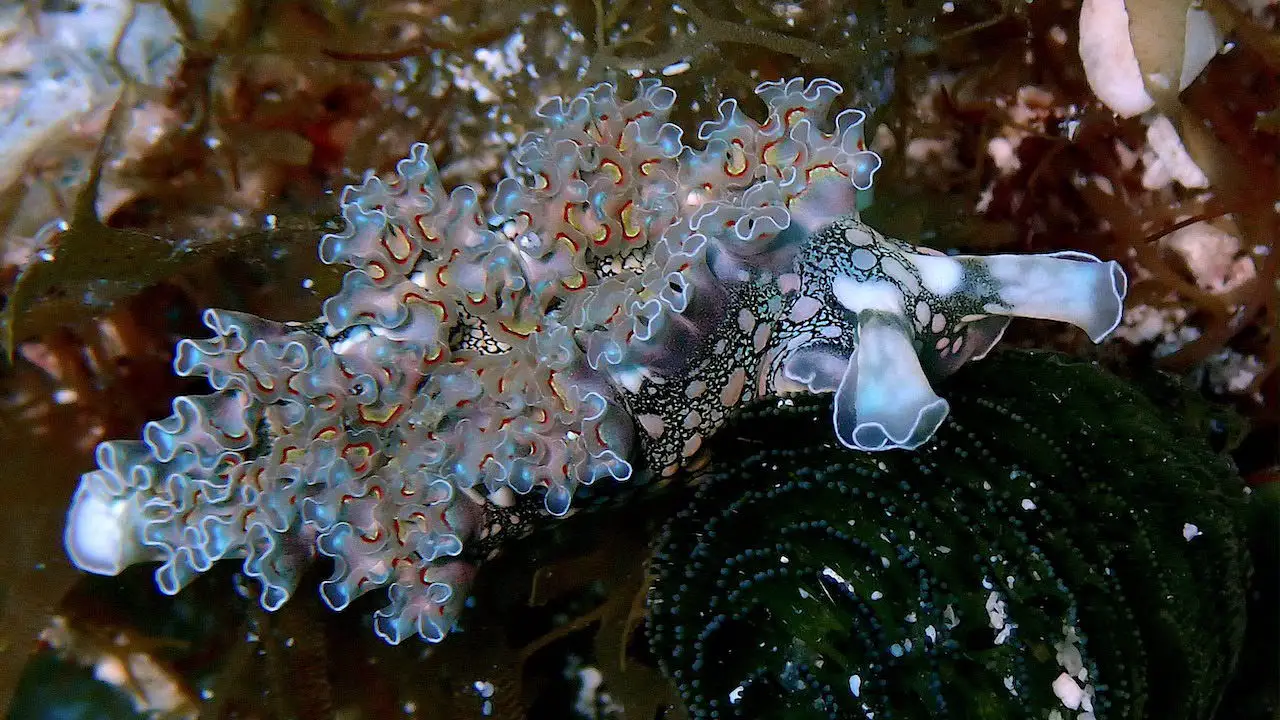
It’s so hard when you finally find a sea slug or nudibranch or a little critter tending a clutch of eggs, or something amazing like a rare Cozumel seahorse – only to have no time to slow down and capture your best frame.
Well if you’re shore diving with your buddy, you can have almost all the time you need.
Aside from currents, which can be strong and might not cooperate, a typical leisurely Cozumel shore dive allows you time to slow down, not startle the marine life, and take time to practice your underwater photography.
But the “no touching” rules should still apply. Always be mindful of the fragility of the environment, and use your buoyancy skills first before getting the shot.
This is especially important in the ecosystems close to shore, as it’s home to many juvenile species that need shelter to grow and become strong enough to venture out. Please don’t disturb their habitat any more than we already do.
6. Cozumel Night Diving from Shore
Night diving in Cozumel is really great.
There are plenty of critters that come out more readily at night (octopus!), and you get to see neat things like these giant basket stars that open up into their nocturnal posture, or maybe coral spawning at certain times of the year, etc.
Of course you may also see several of our other local animal life, like moray eels, Caribbean lobsters, crabs, and maybe even a nurse shark or two.
Often, local dive shops will offer night diving once or twice a week, depending on demand.
If they have enough interested divers, then they’ll arrange a twilight or evening boat dive trip (these days, you can even find some black-water outings).
But if that dive shop doesn’t have a critical mass of interested people, then there’s no boat going out.
Not to fret. Especially if you’re staying at one of Cozumel’s best diving hotels, you more than likely can just arrange to do an evening shore dive right from their backyard.
This also allows some flexibility on the timing. If your buddy is less experienced, you guys might want to enter as the sun is setting, so it’s not very dark as you’re getting ready and entering the water.
That’s a great way to see the marine life “shift change” to nighttime on the coral reef, too!
7. Diveaholism – The Struggle is Real
Finally, the best reason to shore dive when you’re scuba diving in Cozumel is that you simply can’t get enough!
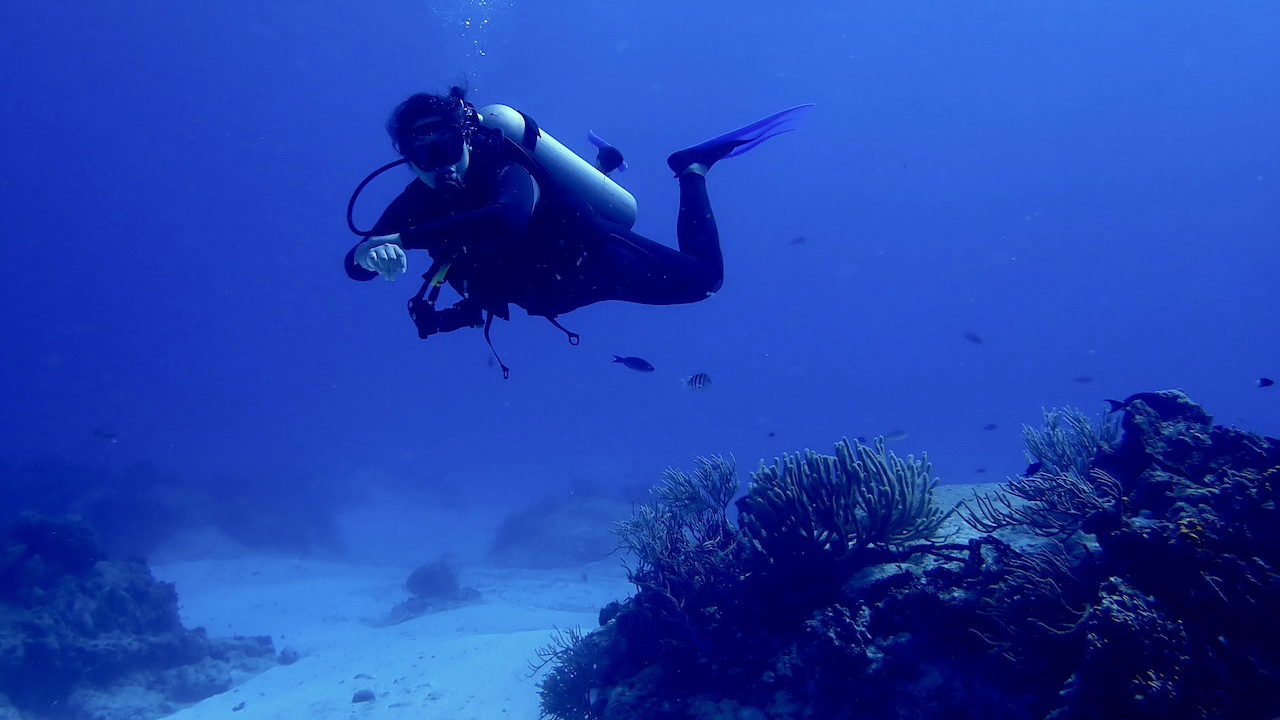
If you’re the type that loves liveaboard diving so you can do 4, 5, 6 dives every day, then you very well might want to shore dive any chance you get.
Just keep an eye on that dive computer.
And if this sounds like a condition you might suffer from, I’d definitely recommend staying at one of Cozumel’s iconic dive hotels. They understand your kind.
So, for all of these reasons, it’s nice to know tha there are plenty of opportunities for good Cozumel shore diving. Just one more reason we’re all so bullish on Cozumel diving, overall.
Now let’s move on to what to keep in mind before you venture out.
Common Hazards of Shore Diving in Cozumel
Strong Currents
Cozumel is known for its ocean currents that run pretty steadily in a Northward direction.
Most days, the current is mild or moderate. But sometimes it can be very strong, even to the point of dangerous.
At those times, it’s easy to get nudged off course by the currents, and pretty hard to get back to your entry point (and not blow through your tank) if the current is running against you.
If you are ever in this situation, the best course of action is to immediately continue parallel to shore while gradually getting yourself in close and then exit the water, no matter where you are. It’s far better to have to walk back to your dive shop along the roadway than it is to try and swim in vain against mother ocean’s currents.
While far better to be close to shore and able to exit along the beach, rather than out in the middle of the ocean, shore diving is still challenging in a current.
Always pay close attention to where you enter, and any landmarks you can look for if you get disoriented and have to surface to find your way back.
Also, it’s always best to swim out against any current, so that your return to your entry point will be relatively easier.
And always keep an eye on that computer and pressure gauge!
Fore more detailed tips on mastering Cozumel’s drift, see this post here.
Shore Dive with a Buddy
It’s always important to dive with a buddy, and to let other people on shore know where you are and what time you will be back.
Sea Urchins and Other Stingers
Entering the water from the shore in Cozumel, you’ll very likely encounter sea urchins that pack a mean sting if kicked or stepped on.
There are other shallow water sea animals that can cause stings and rashes, as well.
When shore diving, it’s important to wear diving booties to protect your feet and ankles from these marine hazards, and really watch where you are stepping. You’re in their habitat.
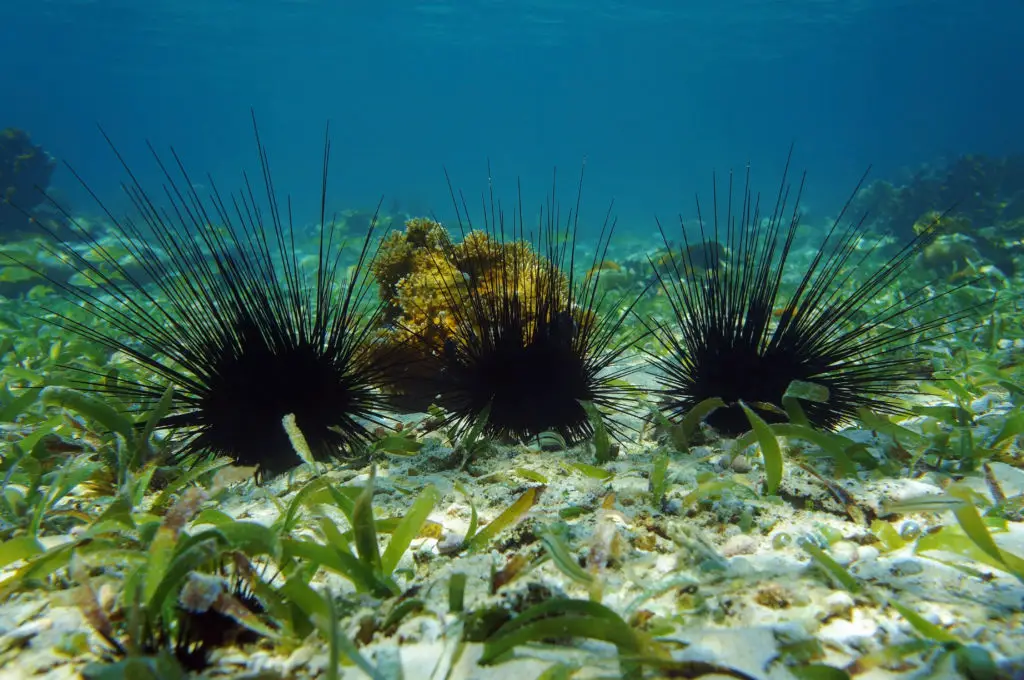
Don’t Ruin the Shallow-Water Habitat!
And more to the point, we are trying very hard to protect what’s left of the oceans, coral reefs, and all marine life.
Please don’t be careless and step all over little shallow water marine critters.
Try to enter where your dive center advises, and follow any well-worn paths you see – those are likely already cleared of marine life, and a bit safe for you and them.
Be especially careful around seagrass beds, where tons of little animals dwell, including increasingly small populations of local seahorses and pipefish, similarly rare sea slugs and nudibranchs, various eggs and egg casings of different species, and more.
Rocky Entries
Marine life aside, most shore areas on the populated West side of the Island, and in or near Cozumel’s national (protected!) marine park, are rocky and jagged with coral bedrock.
This makes for excellent habitat for Cozumel marine life, but not so great for your tender vacation feet, nor for your balance.
Even with your dive booties on, if you’re entering in a new spot, be careful of your footing, and go one cautious step at a time – especially if you have your BCD and tank on your back.
Rocks get slippery with algae, jagged rocks can trip you up, and again, sea urchins are plentiful near many shore areas (usually).
Essential Shore Diving Safety Gear for Cozumel
Given all of those notes above, I’d be remiss if I didn’t remind everyone that certain dive safety gear is even more essential when shore diving in Cozumel, regardless of your experience level.
Much like we stress in our posts about staying safe while snorkeling in Cozumel, there are a few key dive equipment items you should consider essentials for your dive gear bag.
Surface Marker Buoy (“SMB”) – Cozumel Shore Dive Safety 101
This is the main one.
Shore divers in Cozumel or anywhere should always have an inflated surface marker buoy and reel with them. (see our full overview of diver safety gear in this related post, also.)
Also known as a “safety sausage” among divers, a brightly-colored SMB on the water’s surface indicates to oncoming boats that there is a “diver below” and allows boat captains to see and avoid people in the water.
The buoy is deployed and carried along on the dive with the finger spool/reel, so that it that rests on the surface as you’re doing your dive down below.
This is critical given the high volume of daily small snorkel- and dive boat traffic in Cozumel.
The best personal “diver below” buoys come in bright colors that stand out against the blue water – namely bright orange or bright yellow. Some come in other colors, and some are different shapes. I’m sure there are also differing opinions on which is the absolute best, but as many say, the best one is the one you have and USE.
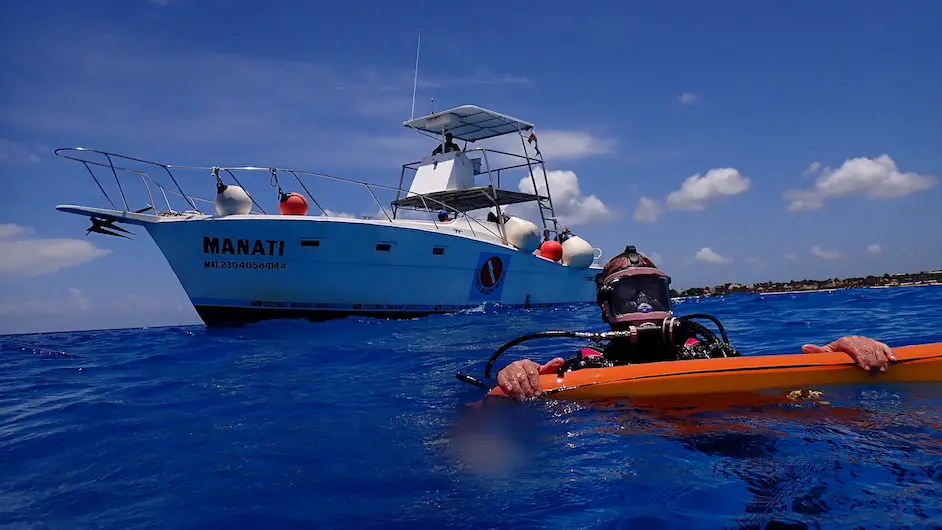
It doesn’t have to be anything fancy, but you need to know how to use it. And use it.
Ask your local dive shop (LDS) if they have them in stock, or order online before your next trip so you can set up the reel and learn how its valve works (some are different than others – all pretty darn easy, though, they just take some practice).
Good Flashlight for Cozumel Night Dives
If your doing a night dive from shore, be sure to pack or rent/borrow a large, strong underwater-grade torch, or flashlight. Please don’t think of this as an additional cost, so much, as a standard piece of safety equipment.
A good water proof light is critical on a night dive, especially in regard to staying in communication with your dive buddy and/or your dive group.
If you ever did have to surface and walk back to your entry point, you’d have use of the light to stay safe along the roadway.
Don’t waste money on a small torch without decent lumens. But you don’t need a searchlight, either.
Here’s a decent choice for most recreational uses.
Treaded Dive Booties and Fins
As mentioned, many of the best areas for shore diving also have some rocky and otherwise tricky terrain.
The best plan is to wear dive booties along with scuba fins that have straps.
Booties go a long way to protecting your feet, and also keep you generally warmer.
Full foot fins are great (maybe that’s why I never shore dive?? haha) but don’t work that well with dive booties.
So if you’re a big fan of shore diving, then go to your LDS and get some warm-water dive booties like this (or similar) and a nice pair of strapped dive fins.
Bonus – you can use the fin straps to clip your fins to your BCD as you’re walking in and out of the water. This frees up your hands to grab ladders or railings (or protect your face if you slip), and generally helps you keep your balance.
Look for a really (comically) large carabiner style clip like this, or something similar that’s easy to manipulate with cold wet hands in the waves, or in the dark.
These clips or commercial-grade ‘caribiners’ are NOT suitable for climbing or towing, but they’re really handy accessories when traveling in general. (be sure to always rinse and occasionally lubricate clips and other accessories with coconut oil, as they too have a tendency to get crusted up with salt water crystals if you forget).
The Right Wetsuit and Thermal Dive Gear
Cozumel is definitely warm water diving, and it’s very comfortable. But if you’re shore diving at night, it will be a little chillier than during a hot sunny day.
Plus, chances are your regular wetsuit will still be…wet, so overall you just stand a greater chance of entering while already little cold, and exiting the water will be colder.
Getting chilled on any dive is no fun, but it’s also a little more dangerous, as it adds to your task load.
When in doubt, go for a full 3mm wetsuit in Cozumel. It’s the Goldilocks version.
**TIP: If you’re new to all this, or you’re really not sure what wetsuit, booties, and and other dive gear you should pack for Cozumel, read this next post to help you pack for your trip: Full Guide to Thermal Gear and Wetsuits in Cozumel
Better safe than sorry, right?
DAN Dive Insurance
It’s recently come to my attention that MANY divers travel around and don’t carry DAN membership and insurance.
Forgive me, but that’s kinda…just…careless.
From day one, my instructor and every diver I look up to has DAN membership and encouraged me to do the same. It’s a no brainer.
The Divers’ Alert Network (DAN) is a reputable organization in the SCUBA diving industry that not only provides great dive accident and travel insurance coverage, they’re an amazing source of dive-medicine information and expertise.
- Not sure if you can dive after a minor surgery? Call the DAN membership hotline.
- Not sure if that splotchy rash on your stomach is the skin bends? Call DAN. (and get some oxygen, because it probably is…)
- Need coverage beyond dive-related accidents and travel disruptions? Call DAN for that, too, because they have other per-trip coverage for gear and equipment, etc., that you can add on at great rates.
DAN is the world leader in diving related medical information, and recognized at dive shops all over the world.
Including Cozumel! The local hospitals in Cozumel all immediately recognize the DAN insignia, and its trusted insurance coverage. Divers who may need treatment in one of our many recompression chambers on the island will get their care quickly and hassle-free with active DAN Diver Insurance coverage.
If you need medical assistance on the island, you might have to pay upfront and in-full before you receive your treatment or at least before you leave the premises, so getting DAN on the phone and aware of your case can ease those additional financial stresses, too.
For about $75-$100USD per year? Yes please. Go get signed up now with this affiliate link, and help us both out.
The most important piece of dive gear in your kit.
Where to Find Best Shore Diving in Cozumel
Now to the fun part.
Cozumel has great shore diving, especially at some of the better known dive hotels on the island situated south of downtown San Miguel, namely the Casa del Mar, Scuba Club Cozumel, and the Blue Angel.
As stated above, diving from shore is less expensive than a full boat dive, and it allows divers to get acclimated and check their gear in more controlled conditions.
Shore diving in Cozumel is great for night dives, too. Though at any time of day you can see lots of marine life, including eels, crabs, lobsters, stingrays, and octopus and other camouflaged critters.
Shore diving isn’t super common among local dive clientele, except for during instruction and education or training. But that’s changing, too.
There seems to be a lot of renewed interest in shore diving here in Cozumel, especially at night.
Best Places to Go on a Shore Dive in Cozumel
1. Casa del Mar Dive Hotel
Casa del Mar dive resort in Cozumel is a popular all-inclusive dive resort and situated right across the street from an excellent shore diving area. I’ve stayed there many times (before moving here).
If you’ve booked a dive package with them, this hotel is a good example of one that offers unlimited shore diving – just be sure to ask while making your reservations and dive arrangements.
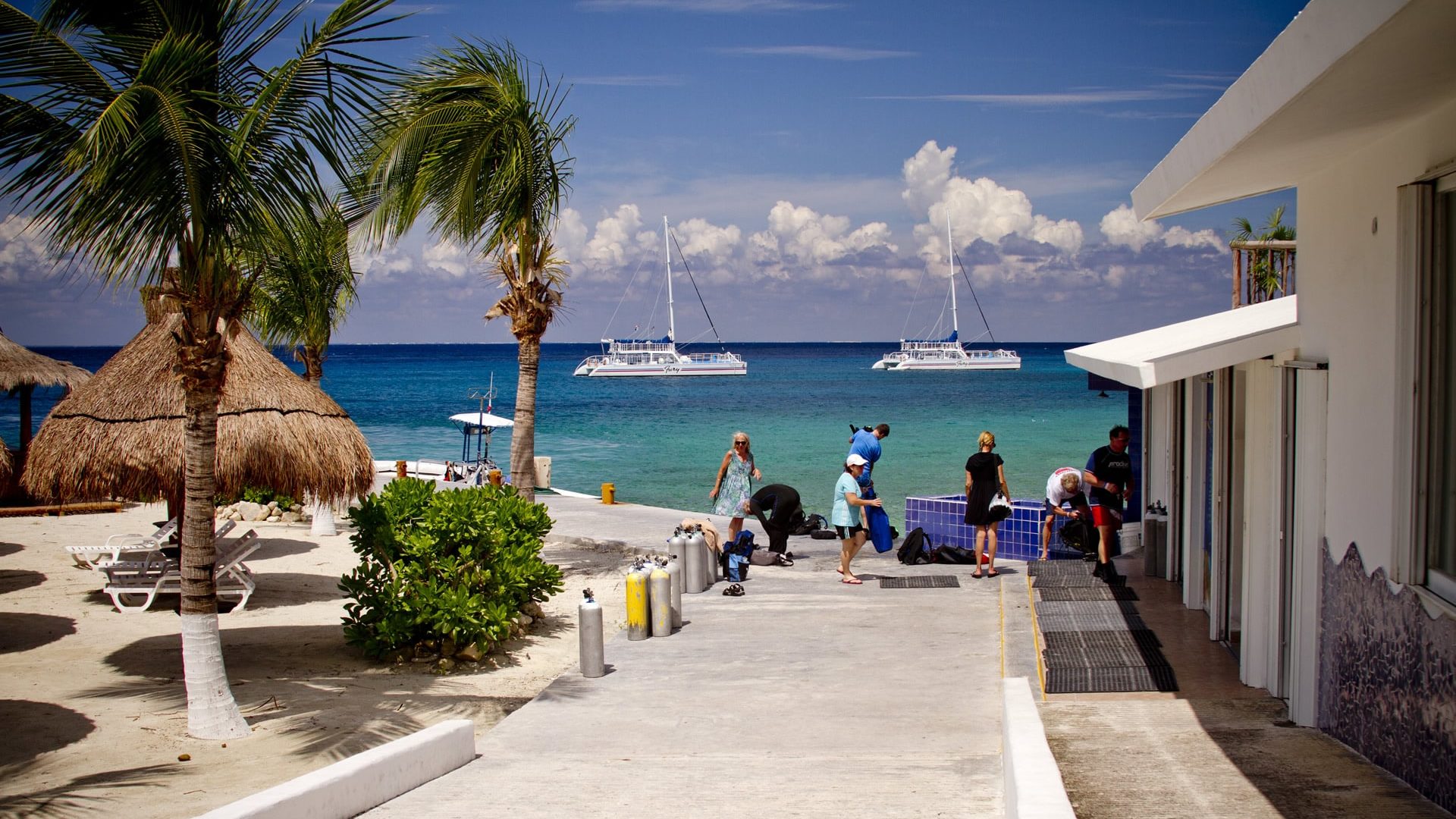
The Casa del Mar hotel pier and beach offers ways to enter by giant stride or (sometime slippery) stairs.
Just off shore they have a nice house reef that ranges from about 25 feet deep (8m) to more like 35 feet deep (11m) as you follow it northward.
The pier itself also has footings that can attract marine life, and there are a few other natural coral formations to visit, as well as some man-made structures that have become artificial reef, namely the bust statues of both Jacques Cousteau and Silvia Earle.
Contact the hotel’s dive groups manager if you’re booking there, or go straight to the source and get in touch with the hotel’s excellent dive operation, Cozumel Marine World dive shop located on the pier to arrange tanks and/or all your boat dives.
2. Blue Angel Dive Resort
Blue Angel is another Cozumel diving mainstay, and people who love it go back time and time again.

Blue Angel has a great restaurant, and often has some live music in the evenings.
Blue Angel Also has shore diving right from their grounds along the ocean front.
More info can be found in our full post about the best Cozumel dive hotels HERE.
3. Scuba Club Cozumel
Search that same post to read all about the oldest and most iconic dive resort on the island, the Scuba Club Cozumel.
A really cool looking hotel that makes up for what might seem like outdated rooms with their dedication to their loyal diving clientele.
Read more here.
4. Coral Princess Resort
The only one on this list that’s at the northern hotel zone (for more on the three hotel zones and which is best for you, see this article), divers at Coral Princess can usually arrange tanks for shore dives, and can enter just in front of the hotel.
I know the least about this hotel, so be sure to ask all the questions when you book with them.
But if it all seems right for your style of diving, then you’ll be shore diving in no time.
Check availability right here.
5. Tikila Beach
This restaurant with beach access has grown tremendously as a dive spot, in its own right, in the last few years.
It’s basically the same dive spot as the Casa del Mar’s house reef and Cozumel Marine World, but now the Tikila restaurant can also outfit you with rental gear. They now also have dive classes and can probably arrange a guide for you.
Entering and exiting here is pretty easy, walking over some wide (and sometimes slippery) concrete steps, before you’re quickly diving along the same house reef of the Casa del Mar pier (see above).
6. Chankanaab Beach Park
Chankanaab is one of the large beach clubs and parks run by the municipality of Cozumel.
It’s easy to arrange diving lessons or shore dives through Viator (use links just below).
This is an especially good choice if you are only in Cozumel for one day, or you are traveling with your whole family and may have some people that want to try diving, and some who’d rather take advantage of the other fun kid-friendly things to do.
Whatever the case may be, Chankanaab has a big beach, good locker room facilities, several restaurants, and a great shallow reef full of gorgeous marine life right out in front of it. You can do a snorkeling tour or try your hand at SNUBA, or several other tours and activities, too.
A great choice, especially if you’re just getting into the sport, or if you come to dive in Cozumel via cruise ship.
Getting Started with Underwater Photography in Cozumel?
If you’re starting to take underwater diving pictures, then shore diving in Cozumel is a great idea for some practice. And this highly rated but easy (and affordable!) underwater camera and housing is a great starter set, that can also grow with you.
For more info, click the “Full UW Camera Guide” and see my full set up.
- Easy to use
- Easy to pack
- Easy on the wallet
- Durable, waterproof, dustproof
CozInfo’s Cozumel Packing Essentials:
|
3.5
|
3.5
|
3.5
|
3.5
|
|
$19.99
|
$249.00
|
$59.95
|
$22.99
|

